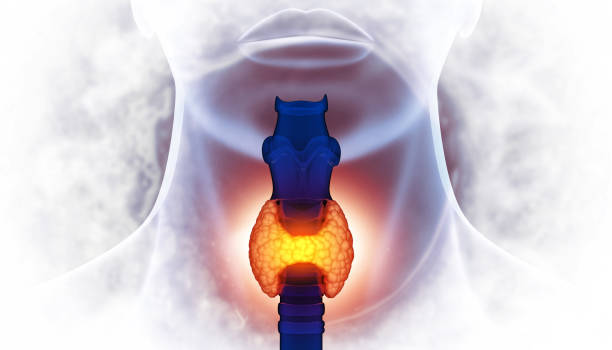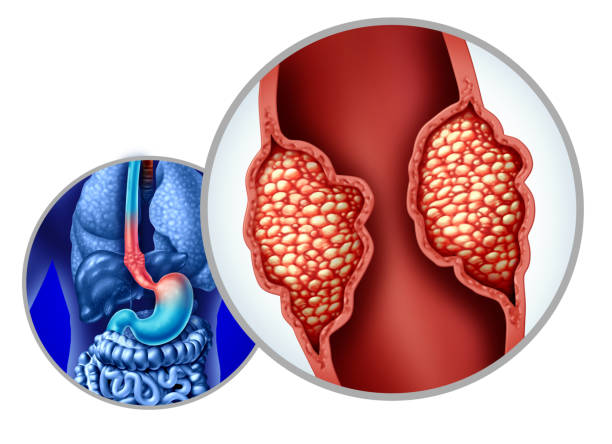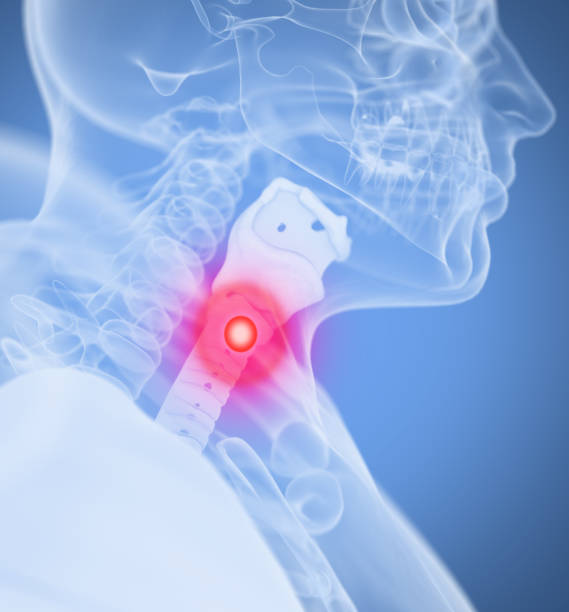Esophageal cancer is a perilous development that makes in the throat, the long chamber that gives food from the mouth to the stomach. It is a basic and a large part of the time lethal sort of compromising turn of events, basically influencing people recent years old, with men being at more serious bet. Esophageal disease can be arranged into various stages, in view of the degree of cancer development and spread. Stage 4 is the most outstanding stage, and it infers that the infection has spread past the throat to various bits of the body.
This article will research stage 4 oesophageal dangerous development thoroughly, including its incidental effects, assurance, treatment decisions, and expectation. Understanding stage 4 oesophageal threatening development can help patients and their families with investigating this inconvenient outing and choose informed decisions about care.
What is Stage 4 Esophageal Malignant growth?
Stage 4 esophageal malignant growth is the last and most exceptional phase of the sickness. In this stage, dangerous development cells have spread (metastasized) from the throat to distant organs or lymph centre points quite far from the principal malignant growth. These may consolidate the liver, lungs, bones, or various bits of the stomach related structure.
The getting sorted out of esophageal harmful development is consistently established on the TNM system, which evaluates:
- T (Tumor): The size of the essential growth and whether it has attacked close by tissues.
- N (Nodes): Whether disease has spread to local lymph hubs.
- M (Metastasis): Whether the disease has spread to far off organs or different region of the body.

For stage 4 oesophageal malignant growth, the disease has reached the “M1” stage, meaning it has spread past the throat. The particular attributes of stage 4 malignant growth can differ in light of where the metastasis happens and how far the illness has spread.
Symptoms of Stage 4 Esophageal Cancer
The symptoms of oesophageal cancer can be inconspicuous and may not show up until the infection has appeared at a general stage. In stage 4, notwithstanding, the delayed consequences are more communicated and can essentially impact the patient’s own special satisfaction. A few normal side effects include:
- Trouble Gulping (Dysphagia): This is one of the most widely recognized early indications of esophageal malignant growth, however in stage 4, it might become serious. Patients might battle to swallow even fluids or delicate food varieties.
- Accidental Weight Loss: As malignant growth advances, it might prompt ailing health or a failure to eat because of trouble gulping. This can bring about critical weight reduction.
- Torment in the Chest or Throat: The development of the growth or the spread of disease to local designs might cause agony or uneasiness in the chest, throat, or back.
- Hacking or Hoarseness: In the event that the disease spreads to the lungs or influences the nerves controlling the vocal ropes, patients might encounter a determined hack or voice changes.
- Fatigue: High level malignant growth can cause outrageous sluggishness and shortcoming, making it hard for patients to do day to day exercises.
- Bleeding: now and again, the malignant growth might cause draining in the throat, prompting spewing blood (hematemesis) or dark, hesitate stools.
- Jaundice: Assuming the malignant growth spreads to the liver, it might cause jaundice, described by yellowing of the skin and eyes.
- Brevity of Breath: Malignant growth that spreads to the lungs can prompt breathing hardships or a vibe of not getting sufficient air.
Since these Symptoms cross-over with those of numerous different circumstances, patients may not promptly look for clinical consideration until the malignant growth has progressed altogether.
Diagnosis of Stage 4 Esophageal Cancer
Diagnosing oesophageal cancer, especially at stage 4, consistently integrates two or three tests and method to demand the presence of sickness, pick its stage, and evaluate whether it has spread. Normal analytic strategies include:
- Endoscopy: An adaptable cylinder with a camera is embedded through the mouth to look at the throat. A biopsy might be taken during this technique to affirm the presence of disease cells.
- CT Sweeps (Figured Tomography): CT examines are utilized to assess the degree of the growth and check for metastasis in the lymph hubs, liver, lungs, or bones.
- PET Ranges (Positron Release Tomography): PET results can help with recognizing district of the body where threatening development cells are successfully creating, giving low down information about the spread of the disease.
- Endoscopic Ultrasound (EUS): EUS combines endoscopy with ultrasound to gain quick and dirty photos of the throat and enveloping tissues, including nearby lymph center points.
- Biopsy: A tissue test is taken from the development or metastasized district to insist the end and choose the sort of illness.
- Liver Capability Tests: These blood tests survey the soundness of the liver, which might be impacted on the off chance that the disease has spread there.
- Bronchoscopy: Assuming that there is a worry that the malignant growth has spread to the lungs, this test might be utilized to glimpse inside the aviation routes and take tissue tests.
The mix of these tests permits specialists to organize the disease precisely and decide the best course of treatment.
Treatment Options for Stage 4 Esophageal Cancer
In stage 4 oesophageal cancer , can be honest and may not appear until the disease has showed up at a general stage. In stage 4, in any case, the delayed consequences are more communicated and can essentially impact the patient’s own personal satisfaction. Treatment choices might include:

1. Chemotherapy
Chemotherapy is many times the essential therapy for cutting edge esophageal malignant growth. Chemotherapy drugs are intended to kill disease cells or stop their development. For organize 4 patients, chemotherapy is ordinarily utilized to shrink the development, moderate the spread of the malady, and ease side impacts, for case, anguish and inconvenience swallowing. Typical chemotherapy regimens for esophageal illness join blends of medicines like cisplatin, 5-fluorouracil (5-FU), and paclitaxel.
While chemotherapy can be capable, it as often as possible goes with coincidental impacts, counting affliction, regurgitating, thinning up top, and a weakened secure system. Nonetheless, fresher medications and designated treatments are being created to further develop adequacy while limiting incidental effects.
2. Targeted Therapy
Designated treatment is a more up to date approach that objectives explicit particles engaged with the development of malignant growth cells. Drugs like trastuzumab (Herceptin) might be utilized on the off chance that the growth tests positive for a particular protein called HER2, which can drive the development of a few esophageal diseases. Designated treatments can possibly be less harmful than chemotherapy and can offer new expectation for patients with stage 4 illness.
3. Immunotherapy
Immunotherapy works by empowering the body’s invulnerable system to see and pursue threatening development cells. Safe assigned spot inhibitors, for instance, pembrolizumab (Keytruda) or nivolumab (Option), have shown ensure in the treatment of state of the art oesophageal illness. These treatments might help patients whose malignant growth has become impervious to different medicines.
4. Radiation Therapy

Radiation treatment utilizes high-energy beams to kill malignant growth cells or psychologist cancers. In stage 4 esophageal ailment, radiation can be utilized to target advancements that are causing obstructive eventual outcomes, for example, burden gulping. Radiation may likewise be utilized to treat affliction that has spread to local organs, like the lungs or bones.
5. Palliative Care and Symptom Management
At stage 4, the essential concentrate frequently moves from remedial treatment to further developing the patient’s personal satisfaction. Palliative consideration experts can offer help for torment the board, healthful help, and profound advising. For patients who can’t swallow, methods, for example, setting a stent in the throat or playing out a taking care of cylinder inclusion might assist with guaranteeing that the patient gets satisfactory nourishment.
Prognosis of Stage 4 Esophageal Cancer
The prognosis for stage 4 esophageal cancer is generally poor, as the sickness is thought of as cutting edge and challenging to treat. The endurance rate for stage 4 esophageal malignant growth relies upon different variables, including the patient’s general wellbeing, the area of metastasis, and how well the disease answers treatment. By and large, the 5-year endurance rate for patients with stage 4 esophageal disease is under 5%, albeit a few patients might live longer with the right treatment and strong consideration.
Patients genuinely must examine their anticipation with their oncologist, as each case is special, and new medicines are consistently being fostered that might offer superior results.
Conclusion
Stage 4 esophageal cancer is a devastating diagnosis, set apart by the spread of malignant growth to far off organs. While the viewpoint is testing, progresses in therapy, including chemotherapy, designated treatment, immunotherapy, and radiation, offer patients some expect dealing with the illness and working on personal satisfaction. Early discovery and mediation stay key in treating esophageal malignant growth, however for patients analysed at stage 4, the emphasis is many times on side effect the executives and palliative consideration.
Patients and their families ought to look for help from medical care experts, support gatherings, and friends and family to explore the intricacies of living with cutting edge malignant growth. With progressing headways in disease research, the future may offer more effective treatments for those diagnosed with stage 4 esophageal cancer.